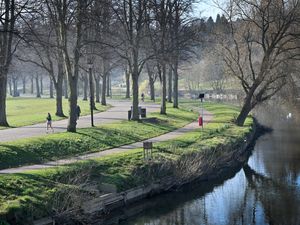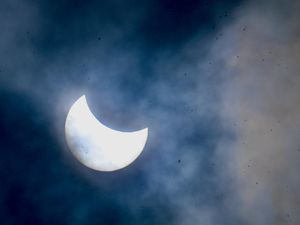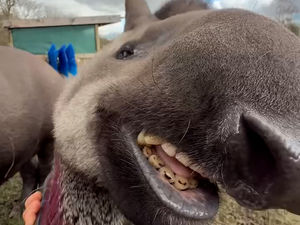Shropshire's top spots to enjoy 'planetary parade' and see seven planets in one night this week
Stargazers will have a rare chance to see seven planets in one night.
Watch more of our videos on ShotsTV.com
and on Freeview 262 or Freely 565
The brief window for the 'planetary parade' will take place in the UK' early on Friday evening (February 28).
It means skywatchers will be able to see all seven other planets in the Earth’s solar system simultaneously - although a telescope will be needed to observe them all.
Mars, Jupiter, Uranus, Venus, Neptune, Mercury and Saturn will be visible among the stars simultaneously between sunset and 6.30pm, after which Saturn sets.
Steve Szwajkun from Shropshire Astrological Society said the evening would provide a great opportunity for people to tick off seeing all the planets in one evening.
He advised people to seek out a flat horizon, and keep their fingers crossed for a clear sky.
Mr Szwajkun also urged stargazers to get their binoculars ready - and have a star map handy.
He said: "If the skies are clear you should be able to spot all the planets in one night.
"You will need a flat western horizon to catch Mercury as it follows the Sun below the horizon as it sets.
"Saturn and Neptune also need a flat horizon as they soon disappear.
"However Venus, Jupiter and Mars are easily spotted and some detail can be seen with binoculars.
"To spot Uranus in Pisces you will need a good star map.
"This is a good opportunity to tick off all the planets in one night with a little bit of effort.
"Oh, and to spot the eighth planet - look down between your feet!"
Explaining how the event was taking place Jessica Lee, astronomer education officer at the Royal Greenwich Observatory in London, said: “The Earth and all the planets all orbit the Sun on the same plane, so they’re all sort of in alignment as they go around the Sun.
“They all go around the Sun at different speeds, so their orbits take different amounts of time, which means from our perspective on Earth, they appear to move across the sky. Because they’re on these fixed orbits, occasionally they do all end up in the sky at the same time.”
Skygazing events will be held across the country, including astronomer-guided gazing in the Brecon Beacons, offering enthusiasts a chance to watch the planetary parade alongside experts.
Shropshire also has four Dark Sky Discovery Sites in the area, all of them on or around the Long Mynd.
England and Wales will have the clearest skies in the country on Friday night, according to the Met Office.
A spokesperson said: “On Friday, large chunks of England and Wales and probably eastern parts of Scotland will have some decent clear spells overnight, while Northern Ireland and Scotland will probably see more clouds as a front approaches from the north west on Friday night."
Venus, Mars and Jupiter will be the easiest planets for skygazers to see.
“They can be spotted with just your eyes, even from a place like London. Venus, the evening star, is really bright, while Mars is high in the southern sky, between the constellations of Orion and Gemini and Jupiter is also high in the south”, Ms Lee said.
“Uranus is really close to Jupiter but is so faint that most people would need a telescope. Saturn is just above the horizon as the Sun is setting, so you might be able to see it if you have a clear view of the western horizon.
“You’ll have to have a telescope to see Neptune but Mercury is just visible where the Sun is setting for a short period of time.”




